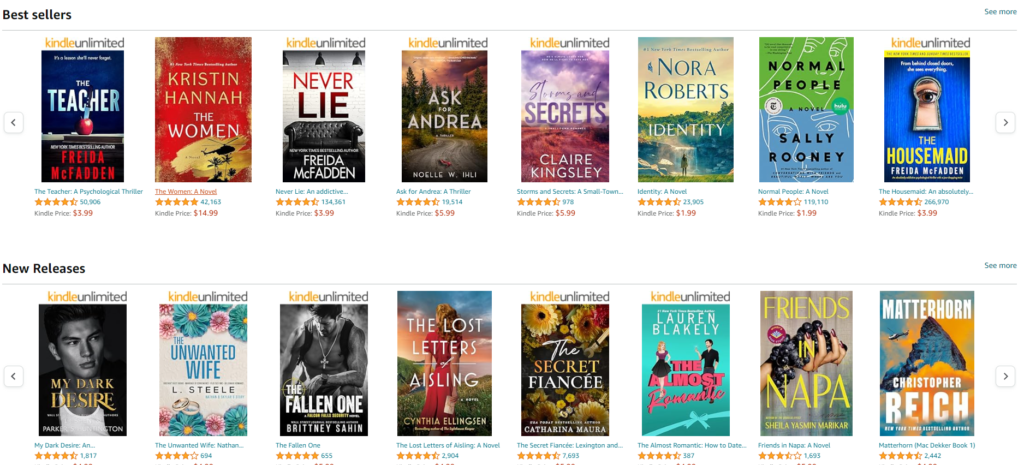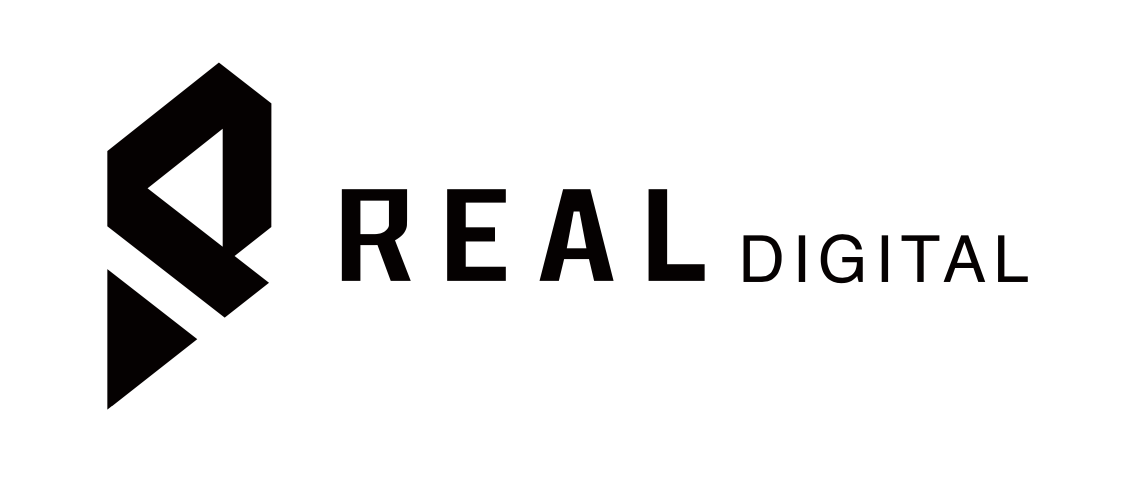How To Sell Digital Products On Amazon
In today’s ever-evolving digital landscape, leveraging Amazon’s colossal reach and infrastructure can be a game-changer for entrepreneurs and creators alike. Whether you’re a seasoned seller looking to expand your repertoire or a newcomer eager to tap into the lucrative world of digital commerce, this article is your roadmap to success. So, buckle up and get ready to unlock the secrets to effectively selling your digital creations on the world’s largest online marketplace.
What Is A Digital Product?
Digital products are intangible items produced and distributed in digital formats to meet various interests and needs. These items exist solely in the digital environment and use technology to provide consumers with value, entertainment, knowledge, or usefulness.
They provide convenience since they can be accessed and utilized on various digital devices, including computers, cellphones, and tablets, making the items available to a global audience via digital channels.
The primary appeal is scalability, low overhead costs, and the possibility of recurring revenue. It makes digital products appealing to creators, entrepreneurs, and businesses seeking to monetize their expertise, creativity, or specialized content in a global and interconnected digital marketplace.
According to Amazon, Amazon.com, Inc. owns a subsidiary called Amazon Digital Services LLC. This company primarily offers digital services and solutions, such as Kindle Unlimited, Amazon Prime Video Direct, Amazon Audible, Amazon Music, and Amazon Kids+. It has engaged in various digital activities, including distributing and managing digital content such as e-books, music, movies, and software.
Of course, you can sell digitally outside of Amazon as well. Still, because so many people already look to Amazon as a reliable purchase source, the platform provides a slightly lower barrier to selling for your marketing efforts.
What Kinds Of Digital Products Can You Sell On Amazon?
Amazon offers diverse options for selling digital products, catering to various interests and industries. Here are some popular categories:
Music
Selling your music on Amazon involves several key steps. First, prepare your music in high-quality digital formats like MP3 or WAV and ensure you have the necessary rights and licenses. Then, choose a digital music distributor to help you reach platforms like Amazon Music, ensuring proper metadata and artwork.
Once your music is uploaded and approved, promote and market it to attract customers and build a fan base. Ranking your music and effective promotion are vital for a successful launch. Whether you’re a budding musician or an established artist, listing your music on Amazon provides a robust avenue for sales and audience connection.
Track your music’s performance and engage with fans to gain valuable insights before expanding to other platforms like the Amazon App Store or collaborating with third-party platforms such as Apple Music and Spotify. With Amazon’s vast reach, selling your music can be a lucrative opportunity to connect with a diverse audience and grow your presence in the digital music landscape.

Graphic and Digital Art
Graphic artists can showcase and sell their digital artwork globally alongside traditional forms like paintings and prints. Through Merch by Amazon, artists can access print-on-demand products and sell digital designs. This innovative platform empowers creators to earn passive income from their artistic talents, including selling digital work formats. From illustrations to gif images, artists can upload digital art for instant purchase, expanding their reach and monetizing their creations. Merch on Amazon provides an accessible and versatile avenue for artists to thrive in the digital market, connecting with a global audience and turning their talent into online earnings.
e-Books
Amazon Kindle Direct Publishing (KDP) is a self-publishing platform tailored for authors and independent publishers. It facilitates the distribution of e-books and print-on-demand books worldwide. With KDP, creators benefit from zero inventory management, fast account setup, and free publishing. Upon listing, leveraging Amazon’s vast audience enhances visibility, while backend keyword optimization and description space aid in convincing consumers to purchase.
Furthermore, KDP offers competitive royalty rates, streamlining the publishing process and granting authors creative control over pricing, formatting, and promotions. Whether it’s novels, essays, or short stories, virtually anyone can utilize KDP to publish their written content and tap into the lucrative market of selling eBooks on Amazon.

Audiobooks
Authors and publishers can seize a significant opportunity by converting their written manuscripts into audiobooks and distributing them through Amazon Audible’s vast client base via the Audiobook Creation Exchange (ACX) platform. Recording can be done professionally in a studio or at home with suitable equipment. Metadata preparation, including title, author details, and a compelling description, is crucial for listing on Audible.
Working with a reputable audiobook publisher or distributor can ensure compliance with Audible’s technical and content standards. This expansion into the audiobook market broadens your audience potential, with millions of listeners enjoying your digital downloads, resulting in royalties for each transaction. Improved visibility in Amazon’s search results further boosts your chances of success in this competitive industry.

Games
Game developers can capitalize on Amazon’s extensive reach and the increasing demand for gaming content by selling digital games on the platform’s dedicated Games and Software section. Whether PC, console, or mobile games, Amazon offers a diverse storefront catering to gamers of all preferences. To begin, developers need to ensure their games are engaging and ready for distribution, then choose from various options like the Amazon App Store for Android games or Amazon Web Services (AWS) for cloud-based solutions.
Creating a developer account and providing essential game information, such as title, description, and screenshots, is necessary for listing on Amazon platforms to enhance discoverability. Developers can select pricing models like one-time purchases or freemium options and utilize Amazon’s tools for managing sales, tracking engagement, and optimizing monetization strategies. Additionally, making games available on Amazon devices like Fire tablets and Fire TV extends the potential to reach a global

Video
If you’re in the business of creating movies, short films, or television shows, Prime Video Direct offers an excellent opportunity to expand your audience reach. By offering your productions on Prime Video, you gain access to a vast audience base through the Prime Video platform. The first step is to create a free Prime Video Direct account to make your videos available for rental or purchase on Prime Video. This account will provide you with the tools and platform needed to distribute your content to a global audience, maximizing your potential for exposure and revenue generation.
Benefits Of Selling Digital Products On Amazon
There are numerous benefits to selling digital things on Amazon rather than physical products. Digital artists, online educators, and sellers on Amazon can use Amazon to build a profitable online business with high-profit margins, high conversion rates, and inexpensive beginning expenses. Decreased manufacturing and fulfillment costs may offer a reasonable price for your digital products while still making much money.
- Large consumer base. You can reach millions of potential customers using Amazon’s built-in customer base across multiple platforms. For example, KDP or Merch on Demand lists your digital products on Amazon.com.
- Trust and credibility. Customers love and trust Amazon because they know their purchases are covered if something goes wrong. Build buyer trust by using their reputable brand.
- Instant satisfaction. Most of these alternatives (except Amazon Merch on Demand) allow customers to get your digital products instantly after purchase.
- No inventory costs. Because digital products are immaterial, there is no need to invest in physical inventory, as you would in a traditional Amazon FBA business.
- Automated delivery. Amazon manages the distribution of digital files and printing of your merchandise or books, making things easier for merchants.
- Global availability. Reach customers worldwide without the requirement for a physical presence in each country.
- Easy scalability. These platforms allow you to list as many things as you want to sell. Increase your digital product options without the limitations of physical production.
How To Sell Digital Products On Amazon
Signing up for platforms will vary depending on what you intend to sell. Let’s go over how to join up!
- Amazon KDP (Kindle Direct Publishing): To publish and sell your eBooks using Amazon KDP, go to the KDP website (kdp.amazon.com). If you already have an Amazon account, sign in; otherwise, set up a new one. Once logged in, you may build your author profile, provide tax information, and create a new eBook by supplying details such as the book title, description, and cover image. Format your eBook according to Amazon’s specifications and then upload it. After you’ve set the pricing and distribution choices, you may publish your eBook to the Kindle Store. Before publishing on Amazon’s Kindle Direct Publishing (KDP), ensure your content is meticulously proofread to eliminate typos and grammatical errors. Optimizing metadata and adhering to formatting standards are essential to enhance visibility and avoid content rejection.
- Amazon Merch: Amazon Merch allows you to create and sell customized apparel and merchandise. Go to the Amazon Merch website (merch.amazon.com) and request an invitation. Once accepted, log in to your Amazon account. Create your first t-shirt or product design by defining colors, style, and price. Upload your artwork, and Amazon will handle the printing, shipping, and customer service. You can set up your royalties and post your designs on the Amazon marketplace, reaching millions of prospective buyers. When using Amazon Merch to create and sell custom T-shirts and other physical products, avoid uploading duplicate or copyrighted designs, offensive content, or watermarked images. Stay updated on the Merch on Demand Content Policy for compliance.
- TuneCore: TuneCore is a platform that allows independent musicians to distribute their music to multiple digital retailers and streaming platforms. Begin by going to the TuneCore website (tunecore.com) and creating an account. Once logged in, you may upload your music tracks, album art, and any pertinent metadata, such as song titles, genres, and release dates. TuneCore can help you distribute your music to such platforms as iTunes, Spotify, Amazon Music, etc. You can select several distribution packages based on your requirements and budget. After paying the distribution fee, your music will be available for purchase and streaming worldwide, and you will be paid directly by TuneCore. Include only the artist’s name and title on the artwork, avoiding common issues like low quality, text readability, or unauthorized use of others’ art. For more guidance, consult TuneCore’s Support Page.
- Amazon Merch on Demand: Original artwork is encouraged, provided it doesn’t infringe on others’ copyright or trademark rights, while designs containing explicit or inappropriate content are strictly prohibited. Age-appropriate designs are recommended for youth sizes, with a firm stance against promoting hate, violence, or tragedy. Attention to detail is crucial, ensuring accurate spelling and relevant metadata in product listings. Designs should meet specific technical requirements, such as using RGB colors, maintaining a 300 dpi resolution, and avoiding watermarks or low-resolution images. By diligently following these guidelines, creators can maximize their potential for success and avoid pitfalls when selling their artwork through Amazon Merch on Demand.
- Audible: To ensure your audiobooks are accepted for sale on Audible, it’s essential to adhere to the ACX Audio Submission Requirements diligently. Before creating and submitting your audio files, familiarize yourself with these guidelines. Audible’s requirements include maintaining consistent sound and formatting throughout the audiobook, including opening and closing credits, and ensuring all files are mono or stereo. Additionally, each audiobook must include a retail audio sample lasting between one and five minutes, devoid of explicit material. Stereo files must not be joint-stereo; each file should not exceed 120 minutes. Familiarizing yourself with these dos and don’ts is crucial for successfully submitting to Audible.
- Amazon Developer: Before submitting your app for approval, it is crucial to ensure compliance with the Amazon Appstore Content Policy. Please adhere to Amazon’s guidelines to ensure your app is published in the app store. Amazon’s Appstore maintains a family-friendly environment, so it’s essential to implement adequate safeguards for young users; otherwise, your app may face rejection or suppression. Additionally, avoid incorporating offensive content, ensure compliance with all relevant laws, and refrain from infringing on third-party intellectual property rights.
- Prime Video Direct: When submitting content for publication on Prime Video Direct, strict adherence to the Prime Video Content Policy Guidelines is imperative. Not only does your content need to meet these guidelines initially for publication, but Prime Video also conducts regular reviews to ensure ongoing compliance with their standards. To facilitate a smooth submission process and maintain your content’s presence on the platform, it’s essential to understand and abide by the dos and don’ts outlined by Prime Video Direct. These include avoiding violations of trademark or copyright laws ensuring content is distinct from other titles and not sourced from the public domain. Furthermore, Prime Video does not accept certain types of content, such as user-generated videos, product reviews, news segments, or health videos. By following these guidelines, content creators can maximize their chances of successful publication and continued presence on Prime Video Direct.
What is the difference between Amazon and Amazon Digital?
Amazon is a comprehensive e-commerce platform offering many products and services, including physical goods and digital content. While Amazon encompasses the entirety of its offerings, Amazon Digital refers explicitly to the digital content and services available on the platform, such as e-books, audiobooks, music, movies, TV shows, software, and digital subscriptions. Customers can purchase or access these digital items directly from Amazon, often downloading or streaming them to their devices instantly. This distinction highlights Amazon’s dual role as a retailer of both physical and digital goods, catering to diverse consumer preferences and needs.
Can sellers make a profit by selling digital products on Amazon?
Selling digital products on Amazon can be profitable for sellers strategically approaching niche selection, quality assurance, pricing, marketing, customer experience, and compliance. By identifying high-demand niches with manageable competition, offering valuable digital content, pricing competitively, utilizing effective marketing strategies, ensuring a seamless customer experience, and adhering to Amazon’s policies and copyright laws, sellers can maximize their chances of profitability in the digital product space. Success in selling digital products on Amazon requires careful planning, ongoing optimization, and a commitment to meeting customer needs while navigating the complexities of the digital marketplace.
What are the disadvantages of selling digital products?
Selling digital products comes with challenges, including high competition in saturated markets, concerns about intellectual property protection and piracy, dependency on distribution platforms, perceived value issues, technical complexities, limited offline sales opportunities, refund and chargeback risks, and market saturation in specific categories. These factors can impact profitability and require sellers to invest in strategies to differentiate their offerings, protect their content, and navigate platform policies effectively. Despite these challenges, selling digital products remains a viable business opportunity for those who can provide high-quality content, adapt to market dynamics, and deliver a seamless user experience to customers.
For any inquiries about starting your business on Amazon, book your free consultation or get in touch here: [email protected]


